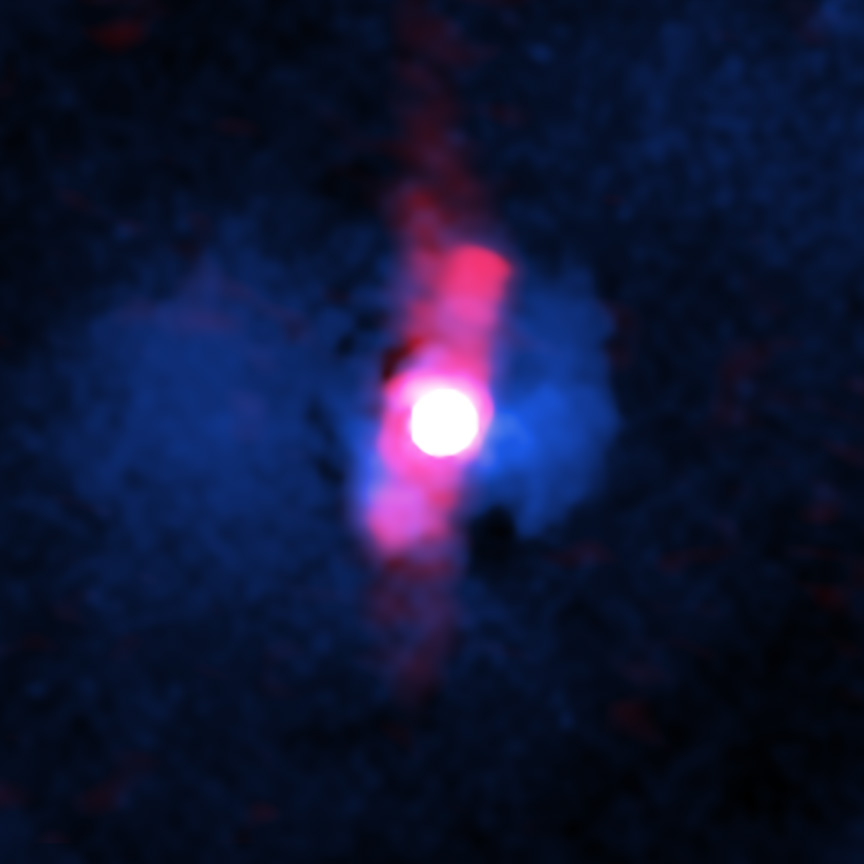The presented image was obtained by combining data collected by the Chandra X-ray Observatory and the VLA radio telescope complex. It demonstrates the quasar H1821+643.

H1821+643 is located at a distance of about 3.4 billion light-years from Earth. It is the closest quasar to Earth in a galaxy cluster. It is a supermassive black hole that actively absorbs the surrounding matter, which is accompanied by the formation of powerful jets and the release of a huge amount of energy.
Earlier, astronomers found that black holes growing at a moderate rate noticeably affected their surroundings, preventing the hot gas from cooling too much. This mechanism regulates the growth of stars in galaxies.
It would seem that much more active quasars should have a much stronger influence on their galactic environment. But, apparently, this is not always the case. The study of H1821+643 showed that quasars could “underperform”. The researchers came to this conclusion by examining the Chandra data. The analysis showed that compared to the huge activity of H1821+643, its effect on the galaxy is surprisingly small.
Earlier, we talked about how scientists created the largest map of supermassive black holes.
According to https://www.nasa.gov
Follow us on Twitter to get the most interesting space news in time
https://twitter.comne/ust_magazine


